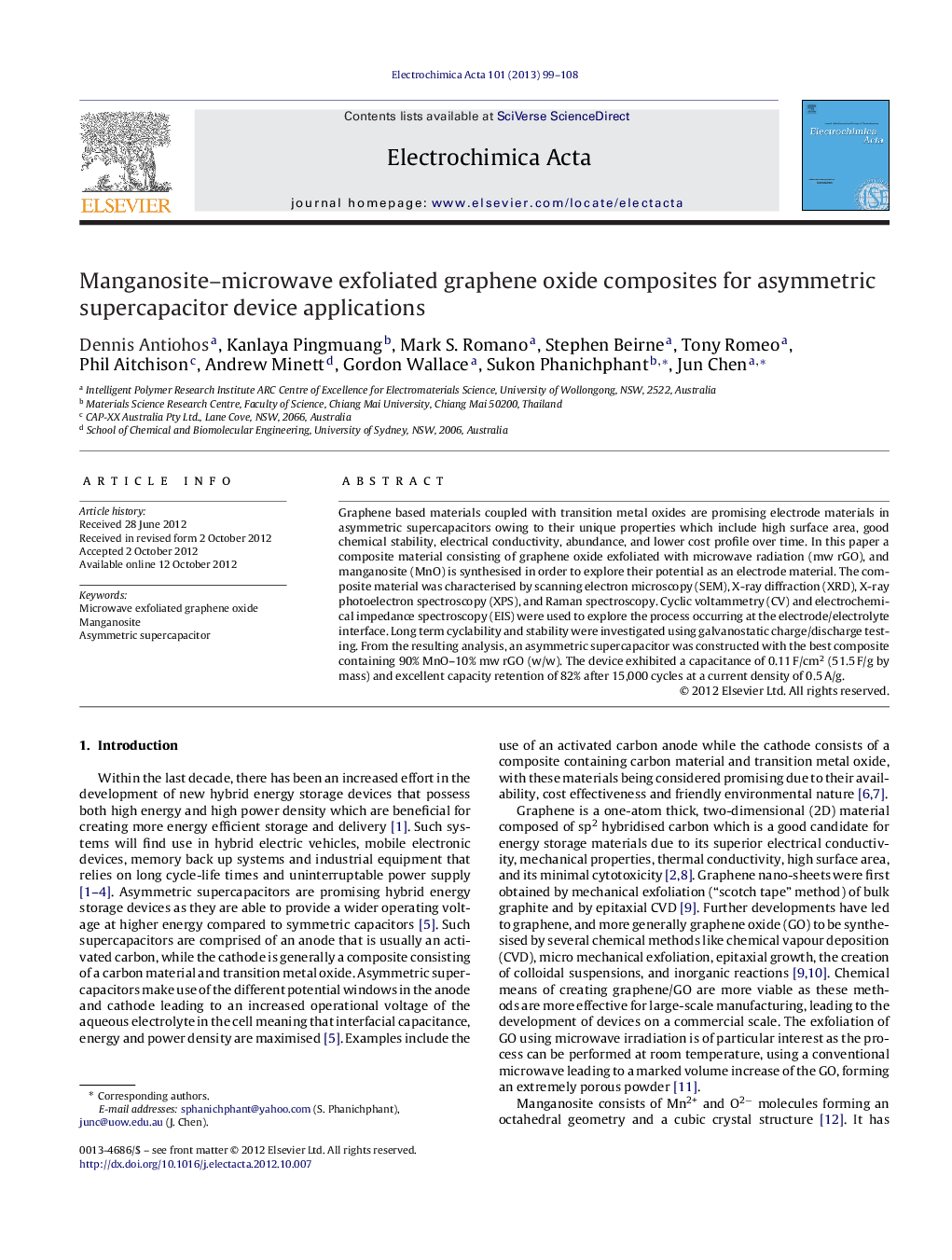| کد مقاله | کد نشریه | سال انتشار | مقاله انگلیسی | نسخه تمام متن |
|---|---|---|---|---|
| 187170 | 459637 | 2013 | 10 صفحه PDF | دانلود رایگان |

Graphene based materials coupled with transition metal oxides are promising electrode materials in asymmetric supercapacitors owing to their unique properties which include high surface area, good chemical stability, electrical conductivity, abundance, and lower cost profile over time. In this paper a composite material consisting of graphene oxide exfoliated with microwave radiation (mw rGO), and manganosite (MnO) is synthesised in order to explore their potential as an electrode material. The composite material was characterised by scanning electron microscopy (SEM), X-ray diffraction (XRD), X-ray photoelectron spectroscopy (XPS), and Raman spectroscopy. Cyclic voltammetry (CV) and electrochemical impedance spectroscopy (EIS) were used to explore the process occurring at the electrode/electrolyte interface. Long term cyclability and stability were investigated using galvanostatic charge/discharge testing. From the resulting analysis, an asymmetric supercapacitor was constructed with the best composite containing 90% MnO–10% mw rGO (w/w). The device exhibited a capacitance of 0.11 F/cm2 (51.5 F/g by mass) and excellent capacity retention of 82% after 15,000 cycles at a current density of 0.5 A/g.
Microwave exfoliated graphene oxide was combined with manganosite into a slurry and formed into a composite cathode material for an asymmetric supercapacitor. The prepared electrode was fabricated into a device with functionalised carbon black as the anode material. The interfacial capacitance was 0.11 F/cm1 (51.5 F/g) with an excellent capacity retention of 82% over 15,000 cycles.Figure optionsDownload as PowerPoint slide
Journal: Electrochimica Acta - Volume 101, 1 July 2013, Pages 99–108